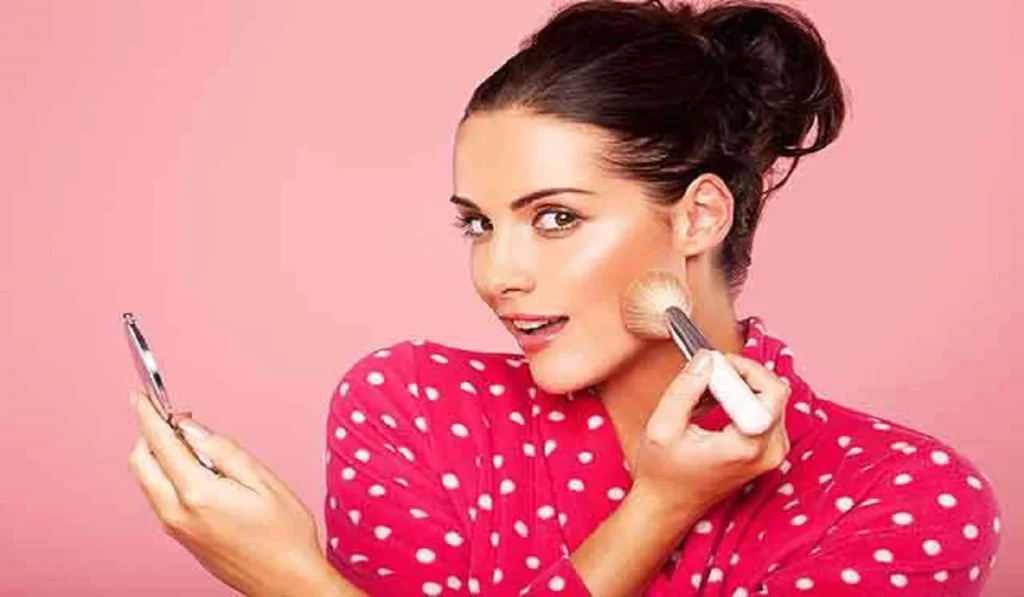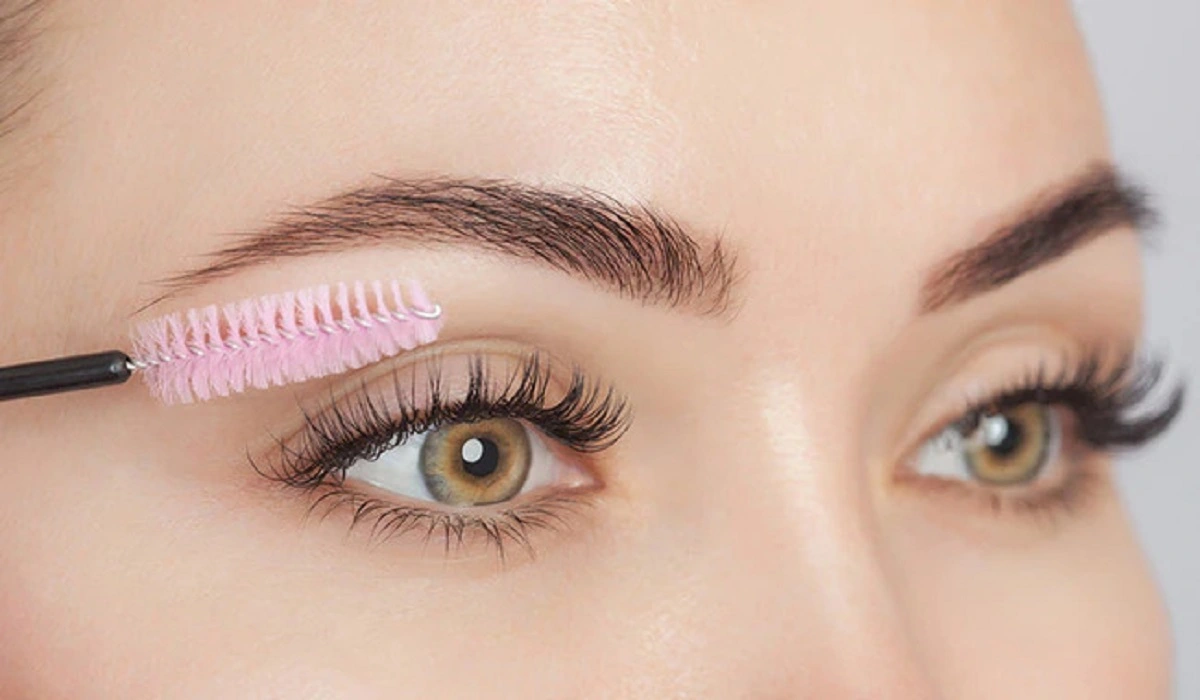Makeup is a powerful tool that, when used correctly, can enhance natural beauty, conceal imperfections, and even take years off your appearance. However, certain makeup practices can have the opposite effect, adding years to your face instead of subtracting them. This article dives deep into 12 more makeup mistakes that might be making you look older and provides expert advice on how to avoid them for a fresher, more youthful look.

Understanding Makeup and Aging
The relationship between makeup and perceived age is intricate. While makeup has the potential to highlight our best features, certain application techniques and product choices can inadvertently age us. Factors such as texture, color, and formula play significant roles in how makeup interacts with mature skin. It’s crucial to adapt our makeup strategies as we age to complement our changing skin, rather than emphasize the signs of aging.
Mistake #1: Skipping Primer
The Role of Primer in Makeup Longevity
Primer is essential for creating a smooth base, filling in fine lines and enlarged pores, which become more prominent as skin ages. A silicone-based primer, for example, can blur imperfections and provide a seamless surface for the rest of your makeup, ensuring it lasts longer without settling into wrinkles.
Recommendations for Mature Skin
Look for hydrating primers that contain ingredients like hyaluronic acid to add moisture to the skin, which helps in achieving a plump, youthful appearance. Avoid mattifying primers, as they can dry out the skin and make fine lines more visible.
Mistake #2: Overusing Powder
Powder’s Aging Effect
Excessive use of powder, especially heavy or mattifying formulas, can settle into fine lines and emphasize wrinkles, making the skin look older. Powder absorbs moisture, and on mature skin, it can lead to a cakey appearance.
Alternative Setting Options
Opt for translucent setting powders applied sparingly with a fluffy brush to areas that tend to get oily, like the T-zone. Consider switching to liquid or cream-based products that provide a dewy finish, as they help maintain skin’s natural glow.
Mistake #3: Neglecting Eyebrow Care
Importance of Full Eyebrows
Eyebrows frame the face, and fuller brows are associated with youth. With age, brows can become sparse. Filling in your eyebrows subtly can lift the face and make you look younger.
Eyebrow Filling Techniques
Use a brow pencil or powder that matches your eyebrow color to fill in sparse areas with light, feathery strokes. Avoid harsh lines or overfilling, as this can look unnatural. Consider a tinted brow gel for a more natural look that also sets hairs in place.
Mistake #4: Heavy Foundation Use
Choosing the Right Foundation
A heavy, matte foundation can settle into fine lines and wrinkles, highlighting them. Instead, opt for lightweight, hydrating formulas that provide coverage without the weight. Tinted moisturizers or BB creams are excellent alternatives for mature skin.
Application Tips for a Natural Look
Apply foundation with a damp beauty sponge to sheer out the coverage and create a more natural, skin-like finish. Focus on areas that need coverage rather than applying a thick layer over the entire face.
Mistake #5: Incorrect Concealer Application
Selecting the Right Concealer
For mature skin, it’s crucial to select a concealer that is hydrating and has a luminous finish to avoid highlighting under-eye wrinkles. The concealer should be one shade lighter than your skin tone to brighten the under-eye area without drawing attention to fine lines.
Techniques to Avoid Creasing
Apply concealer in thin layers and use a damp sponge to blend gently. Set the concealer with a light dusting of translucent powder to prevent it from settling into lines throughout the day.
Mistake #6: Ignoring Blush
Blush for a Youthful Glow
Blush can add a healthy, youthful flush to the cheeks, making you look more vibrant and awake. Skipping blush can make your complexion look flat and dull.
Best Blush Practices
Choose cream blushes for a natural, dewy finish that blends seamlessly into the skin. Apply blush to the apples of the cheeks and blend upwards towards the temples for a lifting effect.
Mistake #7: Avoiding Bronzer
The Role of Bronzer in Contouring
Bronzer can add warmth and dimension to the face, preventing a washed-out look. However, too much bronzer or applying it in the wrong places can age you.
How to Apply Bronzer Correctly
Use a light hand and a fluffy brush to apply bronzer where the sun naturally hits your face: the forehead, cheeks, and the bridge of your nose. Choose a bronzer only one or two shades darker than your skin tone for the most natural look.

Mistake #8: Overdoing Eye Makeup
Enhancing Eyes Without Aging
Heavy eye makeup can make the eyes appear smaller and emphasize fine lines. Instead, focus on enhancing your eyes with lighter, neutral shades and use mascara to open up the eyes.
Eye Makeup for Mature Skin
Avoid using shimmer on the eyelid’s crease, as it can highlight wrinkles. Matte or satin finishes work best for mature skin. Use a light hand with eyeliner, opting for softer shades like brown or gray instead of harsh black.
Mistake #9: Neglecting Lip Care
Preventing Lipstick Feathering
Lipstick feathering can draw attention to fine lines around the mouth. To prevent this, use a lip liner to define the lips and prevent color from bleeding. Choose hydrating lipstick formulas to keep lips looking plump and minimize the appearance of lines.
Choosing Lip Colors Wisely
Dark and matte lipsticks can make lips appear thinner and older. Opt for brighter or more neutral shades with a satin or glossy finish to enhance fullness and youthfulness.
Mistake #10: Sticking to Matte Lipsticks
The Aging Effect of Matte Lipsticks
Matte lipsticks, while long-lasting, can dry out the lips and accentuate fine lines. Their flat finish can also make the lips look thinner and older.
Alternatives for Hydration
Look for lipsticks with hydrating ingredients or consider layering a gloss over your lipstick for added moisture and a fuller appearance.
Mistake #11: Using the Wrong Eyeliner
Softening the Look with Eyeliner
A harsh, solid line of eyeliner, especially on the lower lash line, can make the eyes look smaller and more tired. Soft, smudged eyeliner creates a more flattering, youthful effect.
Eyeliner Techniques for Older Women
Use a pencil or gel liner for easier blending, and consider using colors like dark brown or navy for a softer look. Apply eyeliner more thinly and only
on the upper lash line to lift the eyes.
Mistake #12: Not Updating Your Makeup Routine
The Importance of Evolving Your Makeup Style
Makeup trends and techniques evolve, and so does our skin as we age. Clinging to the same makeup routine from decades ago can make you look dated.
Tips for Keeping Up with Trends
Stay informed about current makeup trends and techniques that suit mature skin. Don’t be afraid to experiment and update your products and application methods to find what works best for you now.
Embrace Your Beauty at Every Age
Remember, makeup is a tool to enhance your natural beauty, not mask it. Embrace your age, experiment with new techniques, and see how a few small changes can make a big difference in how you look and feel.
Adapting your makeup routine as you age is key to enhancing your natural beauty and ensuring you look as young as you feel. By avoiding these 12 makeup mistakes and following our expert tips, you can achieve a flawless, age-defying makeup look that celebrates your unique beauty at every stage of life.
Updating your makeup routine to avoid these common mistakes can dramatically change how your skin looks and feels, helping you achieve a more youthful appearance. Remember, makeup should enhance your natural beauty, not detract from it. By following these tips, you can ensure your makeup works in your favor, highlighting your best features and concealing signs of aging gracefully.
- Can primer really make a difference in how my makeup looks on mature skin?
Yes, primer can significantly improve the appearance of makeup on mature skin by creating a smoother base, reducing the look of pores and fine lines, and helping makeup last longer. - What are some alternative setting products to powder for a more youthful appearance?
Setting sprays or mists can provide longevity to your makeup without the drying effect of powder. Look for products that offer a dewy finish to enhance your skin’s natural glow. - How can I fill in my eyebrows without making them look too harsh?
Opt for a brow product that matches your hair color and use light, feathery strokes to mimic natural hairs. Consider using a tinted brow gel for a softer, more natural look. - What foundation formula is best for aging skin?
Liquid foundations with a luminous or satin finish are ideal for aging skin as they provide hydration and a natural glow, avoiding the cakey look that powders or matte foundations can create. - How do I choose the right blush color for a natural-looking youthful glow?
Select a blush color that mimics your natural flush, typically shades of pink or peach. Cream blushes blend seamlessly into the skin for a more natural, youthful appearance.








